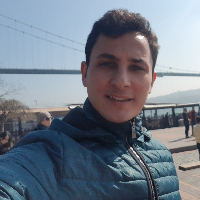Investigation and Analysis of the Functional Nature of the Troglodytic Architecture of Imamzadeh Masoum in Maragheh
Author(s):
Article Type:
Research/Original Article (دارای رتبه معتبر)
Abstract:
After the discovery of Troglodytic Architectures in Iran during the recent decades, the nature and functions of these works have constantly been discussed. The vague and inconspicuous traces of the era in which these remaining works have been created, make it difficult for scholars and those interested in rocky works to provide an accurate chronology for such monuments and find the precise uses of functions of these works. On the other hand, the rocky and cave-like nature of these places have led more researchers to attribute them to the Mithraism religion. However, recent studies on the rocky site of Varjoey (Varevy) village of Maragheh (known as Imamzadeh Molla Masoum), which is somewhat richer in terms of archaeological data, provides further reasons for attributing these works to the Islamic period. However, deep and accurate research requires further archaeological and scientific borings. In the present research, relaying on spatial analysis and comparative data to clarify the chronology and use of the present building, it has been tried to discuss about some points and provide archaeological knowledge, which has not been provided previously. As the authors believe, according to the same points, a more precise date and application can be provided for this monument and it could be examined from new angles with an analytical view. According to this research, with reference to the studies and comparisons conducted so far, it is proposed that the Troglodytic complex of Varjoey may have been originally used as a Buddhist temple belonging to the Ilkhan period that subsequently, after the religious reform by Qazan Khan, it was transformed into a monastery. Accordingly, attributing this site to Mithraism religion is less probable. Finally, although the chronology of other rocky temples requires independent research, it seems that determining the relative chronology and use of the Troglodytic spaces of Imamzadeh Masoum Maragheh-i can be helpful for such monuments.
Keywords:
Language:
Persian
Published:
Iranian Archaeological Research Journal, Volume:10 Issue: 27, 2021
Pages:
213 to 234
https://magiran.com/p2246874
مقالات دیگری از این نویسنده (گان)
-
The Rock Carvings of O-Darasi in Horand County, East Azarbaijan Province
Hassan Derakhshi *, Saeid Sattarnejad
Iranian Journal of Anthropology, -
Pottery Classification and Chronology of Sarand-Daghdaghan Cemetery, East Azerbaijan
Saeid Sattarnejad *, Mohammad Rahmatpour, Javad Zhaleh Aghdam
Journal of Payam-e Bastanshenas, -
An analysis of the Ceramic of the Islamic Period of Yel-Suie Castle in Germi City, Ardabil
Fariborz Tahmasebi, Reza Rezaloo *, Ardeshir Javanmardzadeh, ,
Iranian Archaeological Research Journal, -
The Continuity and Relationship between Meaning and Example in the Tombstone of the Islamic Age of Iran (Case Study of Ram and Stone Lion)
Esmaeel Maroufi Aghdam, Karim Hajizadeh *, Reza Rezaloo, Behrouz Afkhami
Journal of Archaeological Studies, -
Archaeology of Qara Dagh: Preliminary Report of the Survey of the Bronze and Iron Age Sites in Varzeqan Region (Iranian Azerbaijan)
, Alireza Hejebri Nobari *, Erkan Konyar
Journal of Archaeological Studies, -
Explaining of the concepts and social symbols (social structure) of the Iron Age societies; Case study: Tabriz Blue Mosque cemetery
Ali Reza Hejebri Nobari *, , Fatemeh Mokhtaripour, Behzad Mehdizadeh
Iranian Archaeological Research Journal,




